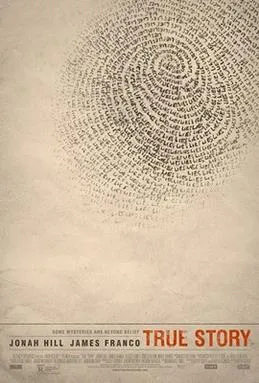Historical accuracy of True Story

Historical accuracy of True Story

Characters
Michael Finkel
Finkel is the real author whose memoir the film is based on. The portrayal of his firing from the NYT, his interactions with Longo, and his complex motivations align closely with his own account, with some dramatic interpretation.
Christian Longo
Longo is the real convicted murderer. The film accurately depicts his crime (murdering wife and three children), flight, use of Finkel's identity, capture, and manipulative personality based on Finkel's interactions and trial evidence.
Jill Finkel
Based on Finkel's real wife. Her portrayal reflects the supportive but increasingly troubled perspective described in the memoir regarding Michael's involvement with Longo.
Mary Jane Longo
Mary Jane Longo was the real victim.
Zachary Longo
Zachary Longo was the real victim.
Sadie Longo
Sadie Longo was the real victim.
More characters
Madison Longo
Madison Longo was the real victim.
Karen
Represents the real editor(s) at the New York Times Magazine involved in Finkel's dismissal. The specific name and portrayal might be a composite or slightly altered representation.
Greg Ganley
Represents the law enforcement officials who investigated the Longo case and interacted with Finkel. Likely based on or a composite of real detectives involved.
Judge Cheryl Long
Based on Judge Paula Brownhill who presided over the real trial. The name was changed for the film, but the role represents the real judicial figure.
Pat Frato
Represents witness testimony presented during the real trial that contradicted aspects of Longo's accounts. May be based on a specific witness or a composite.
Story
Finkel fired from NYT for compositing sources/fabrication
Finkel was actually fired from The New York Times Magazine in 2002 for creating a composite character in a story about child labor in Africa.
Longo murders family (wife, 3 children) in Oregon (Dec 2001)
Christian Longo did murder his wife Mary Jane and their three young children, Zachary, Sadie, and Madison, in Oregon in December 2001.
Longo flees to Mexico, uses Finkel's identity
While on the run in Cancún, Mexico, Longo falsely identified himself as "Michael Finkel, writer for the New York Times."
Finkel learns of identity theft after Longo's capture
Finkel was contacted by a reporter after Longo's arrest, informing him that Longo had been using his name, which sparked Finkel's initial contact.
Finkel contacts Longo; they begin correspondence/calls
Finkel initiated contact with Longo while Longo was awaiting trial, leading to extensive phone calls, letters, and eventually prison visits, as detailed in the memoir.
Longo grants Finkel exclusive story rights, claims partial innocence
Longo did offer Finkel exclusive rights and presented various narratives, initially claiming innocence in some of the murders, attempting to manipulate Finkel.
Finkel becomes deeply involved, relationship blurs lines
Finkel's memoir details his complex psychological involvement with Longo, the blurring of journalistic objectivity, and the "mutual manipulation" that developed between them.
Finkel and Longo discuss writing/storytelling
Their interactions involved discussions about narrative and writing, with Finkel sharing insights and Longo practicing, as described in "True Story" (the memoir).
Longo presents contradictory accounts
Longo's story changed over time during his interactions with Finkel and during the legal proceedings.
Finkel attends Longo's trial (2003)
Finkel attended the trial where Longo testified.
Longo's trial testimony (claiming he killed wife/one child only)
Longo did testify, presenting a specific narrative attempting to mitigate guilt (he pleaded guilty to killing Mary Jane and youngest daughter Madison, not guilty to killing older children Zachary and Sadie). The film simplifies this plea/testimony somewhat.
Trial evidence/witnesses contradict Longo
The prosecution presented evidence and witness testimony that undermined Longo's version of events.
Longo convicted on all counts, sentenced to death
Longo was found guilty of the aggravated murders of all four family members and sentenced to death by lethal injection (he remains on death row in Oregon).
Finkel writes his memoir "True Story"
Finkel published his memoir detailing his relationship with Longo and the case in 2005.
Ambiguity about truth / manipulation remains
The film effectively captures the lingering questions about Longo's complete truth and the complex, morally ambiguous nature of the Finkel-Longo relationship, central themes of the memoir.
Setting
Michael Finkel's Montana residence
Represents the real setting where Finkel lived after his dismissal, providing a contrast to the urban world of NYC journalism and the grim realities of the Longo case.
New York City (NYT Magazine offices)
Depicts the professional journalistic environment from which Finkel was ejected.
Oregon locations (Newport, Courthouse, Prison)
Represents the key locations in Oregon related to the Longo murders, investigation, trial, and Longo's incarceration (Oregon State Penitentiary implied).
Mexico (Cancun area)
Briefly depicts the setting where Longo fled and was eventually apprehended while using Finkel's identity.
Early 2000s time period
The film accurately reflects the timeframe (approx. 2002-2003) through technology shown (phones, computers), news cycles, and general atmosphere.
Prison visiting room / Interview setting
The stark setting for Finkel's interviews with Longo reflects typical prison visitation environments.
Courtroom setting
The depiction of the courtroom during Longo's trial appears standard for American legal proceedings.
Atmosphere (Journalism, Crime, Legal process)
Effectively conveys the distinct atmospheres of investigative journalism, a high-profile murder case, and the formalities and tensions of the American legal system.
Contrast between Finkel's life and Longo's situation
Uses settings effectively to underscore the stark contrast between Finkel's relatively comfortable (though professionally troubled) life and Longo's imprisoned reality facing capital charges.
